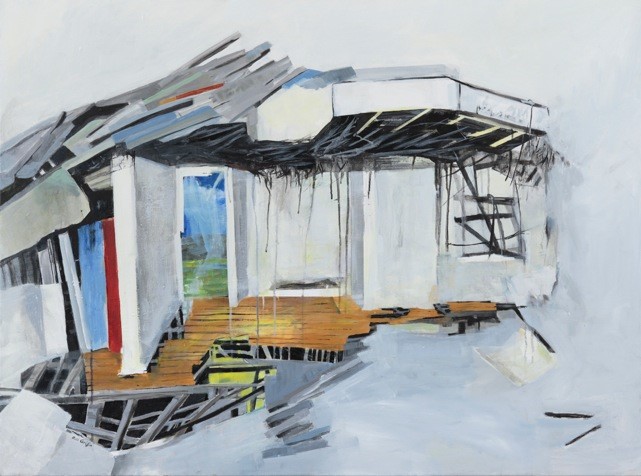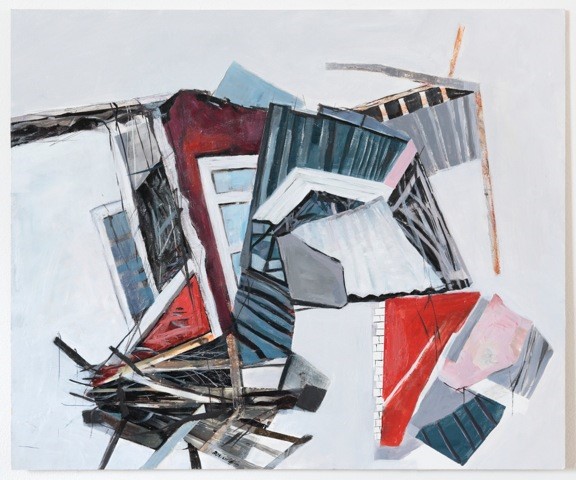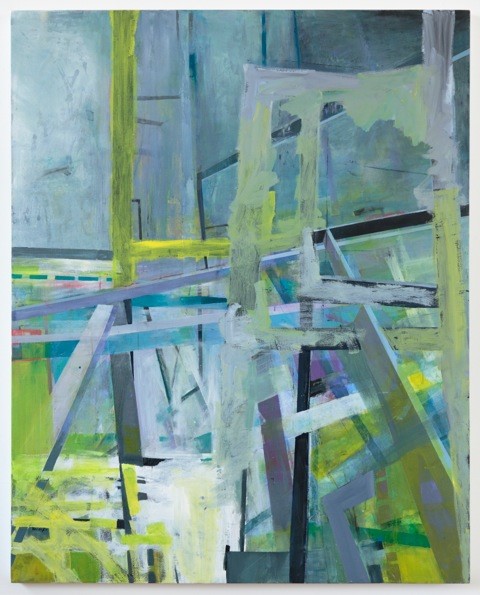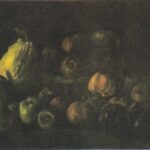Paintings that describe fragmented domestic spaces populated with disintegrating walls, are timely. They come when the industrial spaces around Rosi Griffin’s Collingwood studio are rapidly transforming with new developments continually springing up for a swelling inner city population. They come at a time when massive rises in Australian house prices have turned property development and residential renovation into a national sport when glossy magazine style layouts of idealised domestic spaces cloud our image of that the home has been for most of us.

The paintings, Fragmented Dwelling and Urban Transformation, describe this time as the disintegration of the domestic space. Not only is the possibility of ownership becoming more remote for emerging generations but for those that have a home, the domestic space is now set in the context of surrounding development and unattainable images of perfection. The domestic space is being threatened on many levels as materialistic impulses cloud out communal and familial impulses. The stability and viability of that space is being torn, dislocated and shredded like the walls in these paintings. We can no longer claim to be escaping the slums, as Modernism claimed almost century ago, rather, it is now all for the sake of the new and the ideal as dictated by fake images of domestic perfection.

Walls create a space that not only protect, but also provide a known place, and in that place gradually builds a narrative of belonging. The experience of a neighbourhood, the identification with a place are held by familiar walls. The walls of our home, the walls of our streets, are pages on which our stories are written. Without them we fall into a a perpetual present with no past, perpetual change eroding a language of belonging. Language of home gradually disintegrates and becomes abstracted until all that we have in its place are traces of memory of what was. As in Build after demolition, we no longer have identifiable walls, just the trace of walls that define a present space with no history and no story. Edges without containment and protection.

Opening Friday 2 June, 6 pm to 8 pm at St Heliers Street Gallery, Abbotsford Covent, 1 St Heliers Lane, Abbotsford.
Written by Marco Corsini

